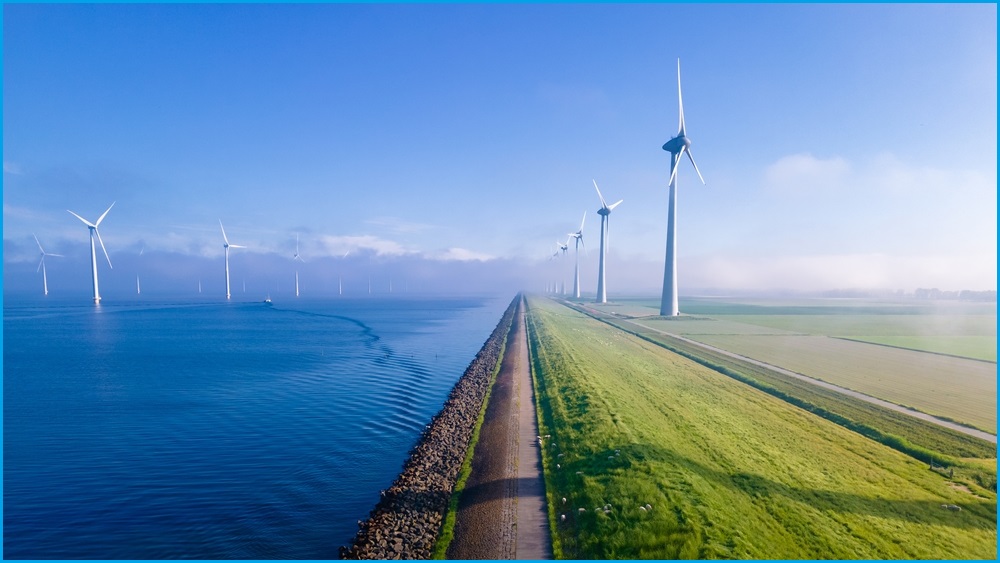Renewables, including solar photovoltaic (PV) cells and wind, are still the most affordable option among new-build energy technologies, according to the CSIRO’s latest GenCost report.
Published annually in collaboration with the Australian Energy Market Operator (AEMO), this year’s report was also the first to include cost estimations for large-scale nuclear power generators, following extensive consultation with industry stakeholders.
The report found that introducing nuclear energy to the Australian market would be more expensive than investing in renewables.
"GenCost is flexible to adjusting assumptions, scope and methodology in response to constructive feedback received during the formal consultation period and throughout the year,” said Paul Graham, CSIRO’s Chief Energy Economist and lead author of GenCost.
The high cost is due in part to the high initial investment that nuclear generation would require, which includes the construction of purpose-built infrastructure, as well as the costs of establishing a development pipeline and the requisite legal, safety and security processes.
"We did a lot of work to determine what nuclear power would cost in Australia," Graham told the ABC.
The findings estimate that nuclear generation would cost up to two times as much as renewables and take a minimum of 15 years to set up.
Wind costs have also been updated following a finding that onshore wind production prices have increased by eight per cent.
The cost of solar PV has decreased by the same amount.

Current and projected energy costs by generation technology. Source: GenCost 2024
The CSIRO acknowledges renewables have benefitted from decades of investment and research prior to the pandemic, which has helped make them an affordable choice.
It says GenCost is designed to provide reliable, transparent and apolitical data to help both government and industry shape the growth of Australia’s electricity system throughout the transition to net zero.
“Whether the input GenCost receives is highly specialised or simply advocating for a particular pathway, our considerations are policy and technology neutral," said Dr Dietmar Tourbier, CSIRO’s Director of Energy.
This year’s report was compiled with cooperation from a range of stakeholders from across the industry, including 40 consultation papers.
“The feedback provided by the energy community each year is invaluable, given that cost forecasts of future electricity generation, storage and hydrogen production can fluctuate significantly and no single technology can achieve our transition to net zero," Dr Tourbier explained.
Nuclear reactions create fallout
This year’s report comes at a time when nuclear energy is hot on the political agenda, following the Coalition’s proposal to build nuclear power stations in Australia.
The plan, which counters the Labor Government’s renewable-focused policy, has proven to be contentious.
Energy Minister Chris Bowen was quoted as saying that, under scrutiny, the opposition’s arguments in favour of nuclear energy “..crumble like a Sao in a blender.”
The CSIRO was also dragged into the fray when Opposition Leader Peter Dutton claimed that the researcher’s findings on nuclear energy costs had been ‘discredited’.
Chief Executive Douglas Hilton refuted this, stating, "No matter the challenge we are tackling, CSIRO's scientists and engineers can be relied on by the community to work creatively, assiduously and with integrity.”
Powerful investment needed to ensure supply
Earlier this week, AEMO issued an update to their ten-year reliability outlook, calling for urgent investment into Australia’s electricity network.
AEMO CEO Daniel Westerman explained funding is crucial to ensure energy supply remains uninterrupted as coal plants are closed.
“While new generation and storage capacity continues to increase, project development and commissioning delays are impacting reliability throughout the horizon,” said Westerman.
The recently released Federal Budget earmarked a massive $65 billion for renewable energy investment.
This will cover the cost of integrating consumer-held solar power and batteries into the grid, as well as allocating $400 million for the foundation of a Net Zero Economy Authority to coordinate the Australian transition.
In April, the government also announced the Solar Sunshot program, which invested $1 billion in manufacturing to produce solar panels domestically.










